Competition Reimagines New York State Pavilion As a Cheeseburger Museum, Hanging Meadow
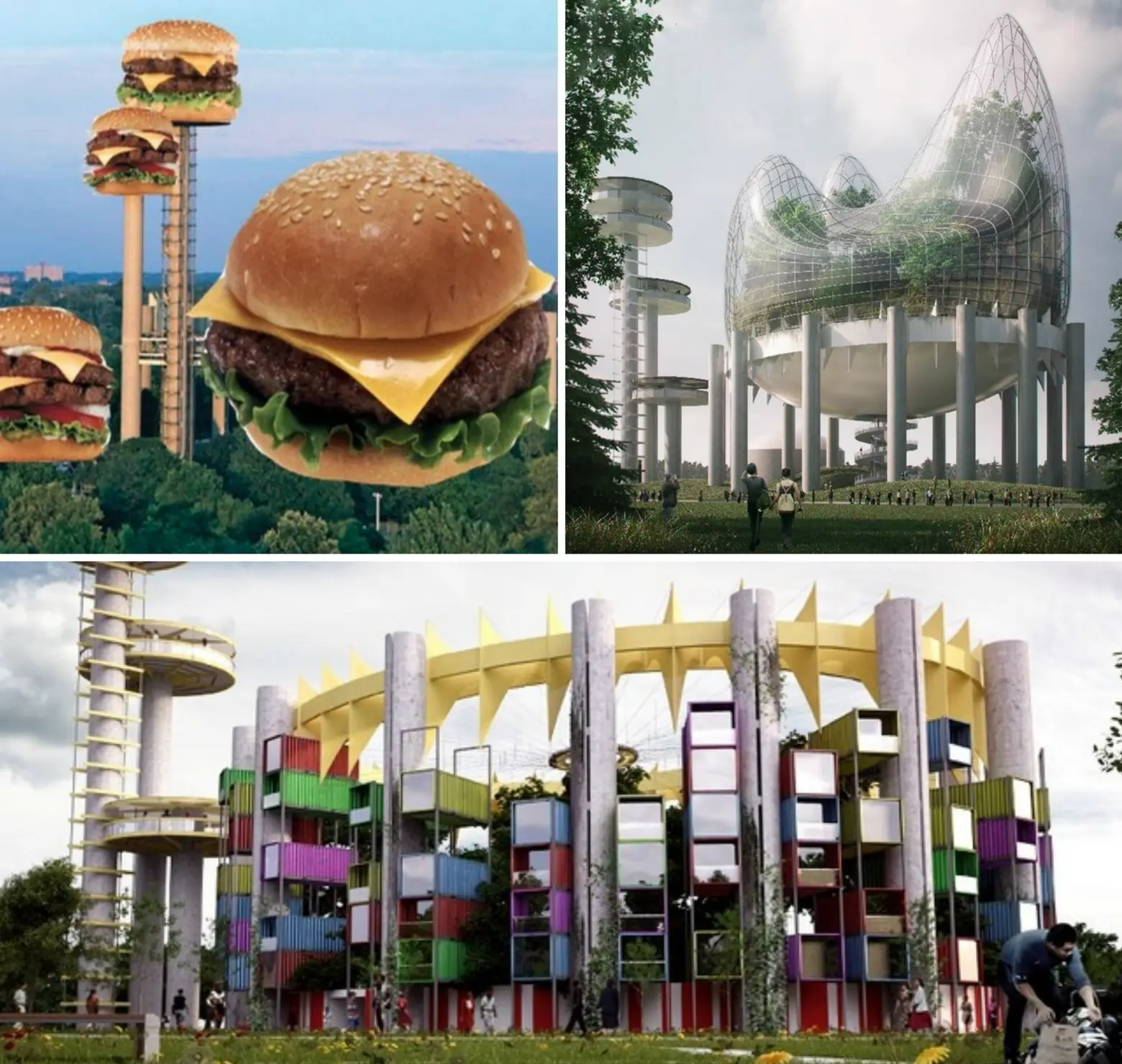
Philip Johnson‘s iconic New York State Pavilion in Flushing Meadows-Corona Park was built for the 1964-65 World’s Fair, but has struggled in recent decades to find its purpose. Because of its architectural and cultural merit, however, preservations have made great strides in the past several years: a restoration task force secured $5.8 million for repairs in 2014; it received a $3 million paint job last fall; and now it’s creating quite the buzz thanks to an ideas competition put on by the the National Trust for Historic Preservation and People for the Pavilion (h/t WSJ).
The competition, which organizers hope could help drum up enough enthusiasm to aid in the $52 million total restoration, has drawn more than 250 submission, including wacky ideas like a cheeseburger museum, a giant time-telling machine, and a UFO landing pad to more practical functions like a brewery, hanging gardens, live-work space for artists, and event venues.
Many of the entries focus on outdoor, public space. Not surprisingly, there’s a High Line-esque proposal, as well as Japanese gardens and urban or vertical farms. The Hanging Meadows idea pictured above seeks to create a suspended natural environment that looks like a contemporary greenhouse.
There are a lot of proposals that want to create cultural spaces and event venues, such as this one for the Queens Bowl, which would host events and become a new home for the Queens Night Market. In the giant time-telling machine, 6,000 silicon cords rise and fall according to time of day, but they also double as a projection screen for video performances at night.
Other ideas focus on social issues, envisioning the structure as a homeless shelter or refugee center.
And of course there are those ideas that are purely fun (a cheeseburger museum) or just plain out there (a UFO landing pad).
As the Journal reports, “About $11.5 million has been allocated thus far by the mayor, the borough president and the city council. Construction on that project is expected to begin in 2017. Making the towers fully accessible to the public would cost an estimated $22 million, while a full renovation of the Tent of Tomorrow would run about an additional $30 million, according to the parks department.”
Judges for the competition include architect Deborah Berke, architecture critic Paul Goldberger, and several local elected officials. Winners will receive $3,000 cash, and voting is currently open. The submission with the most public votes will be announced on July 15th, and the first-, second-, and third-place winners will be announced in August. See all the entries and place your vote here >>
RELATED:
Get Insider Updates with Our Newsletter!
Leave a reply
Your email address will not be published.
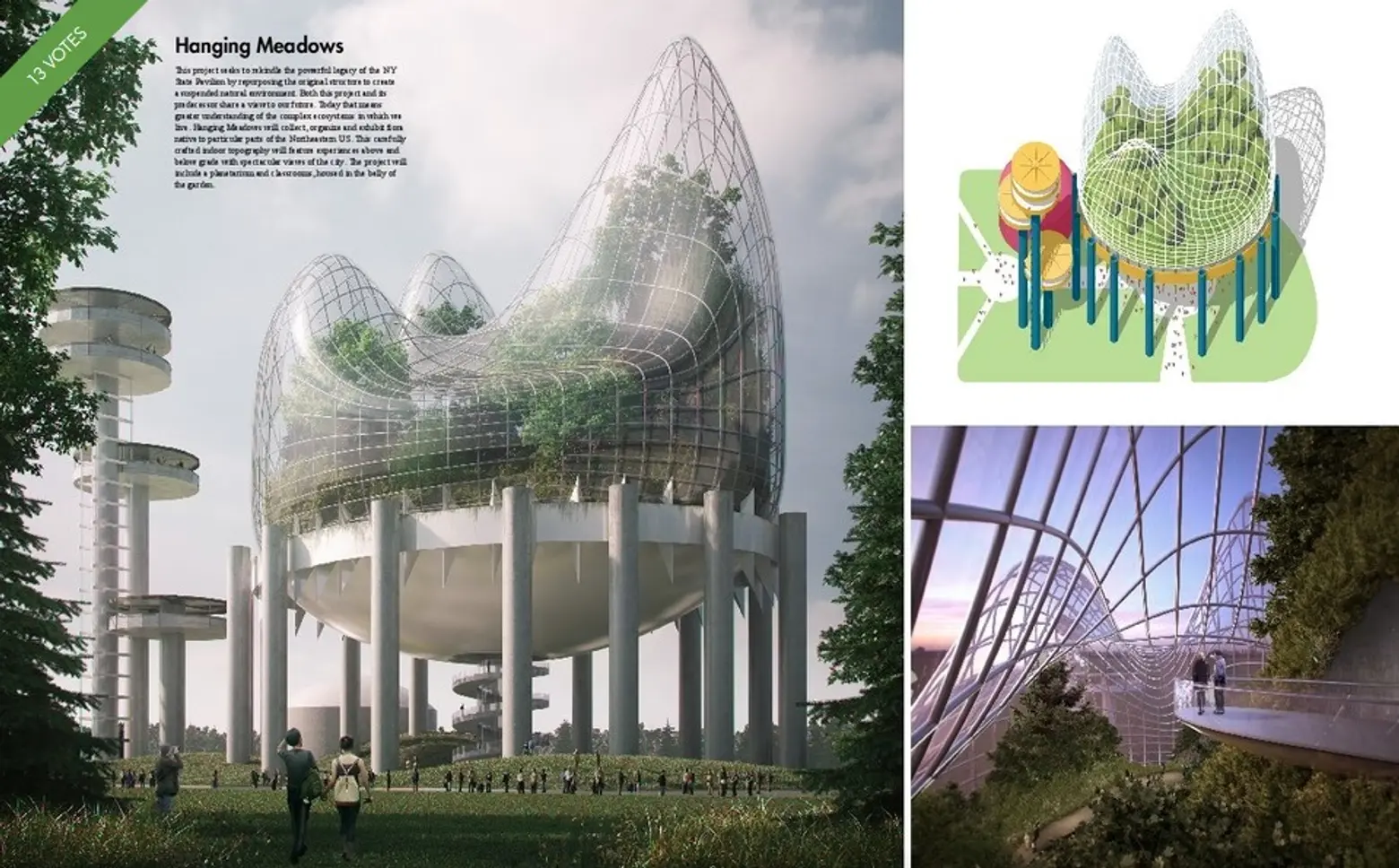
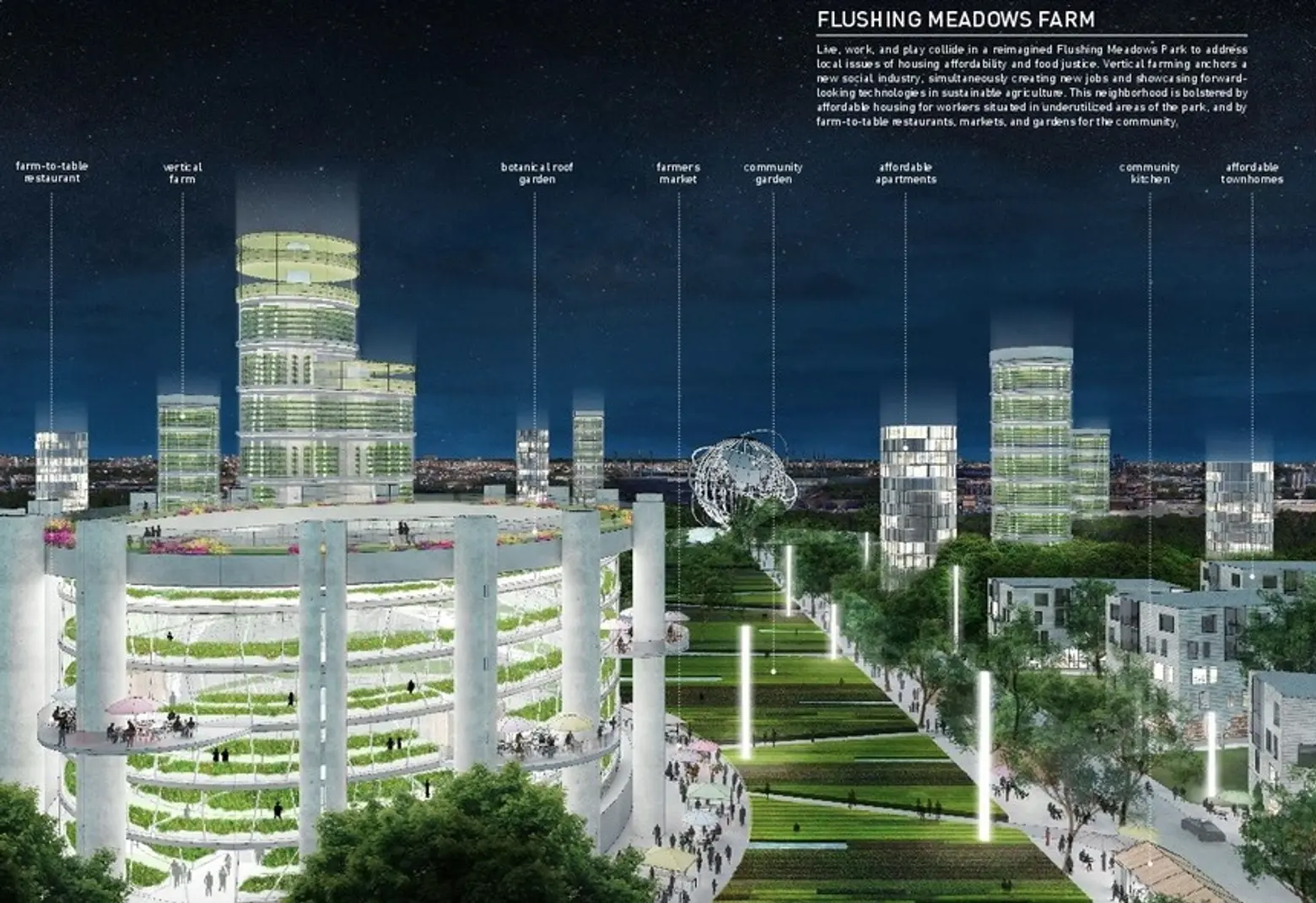
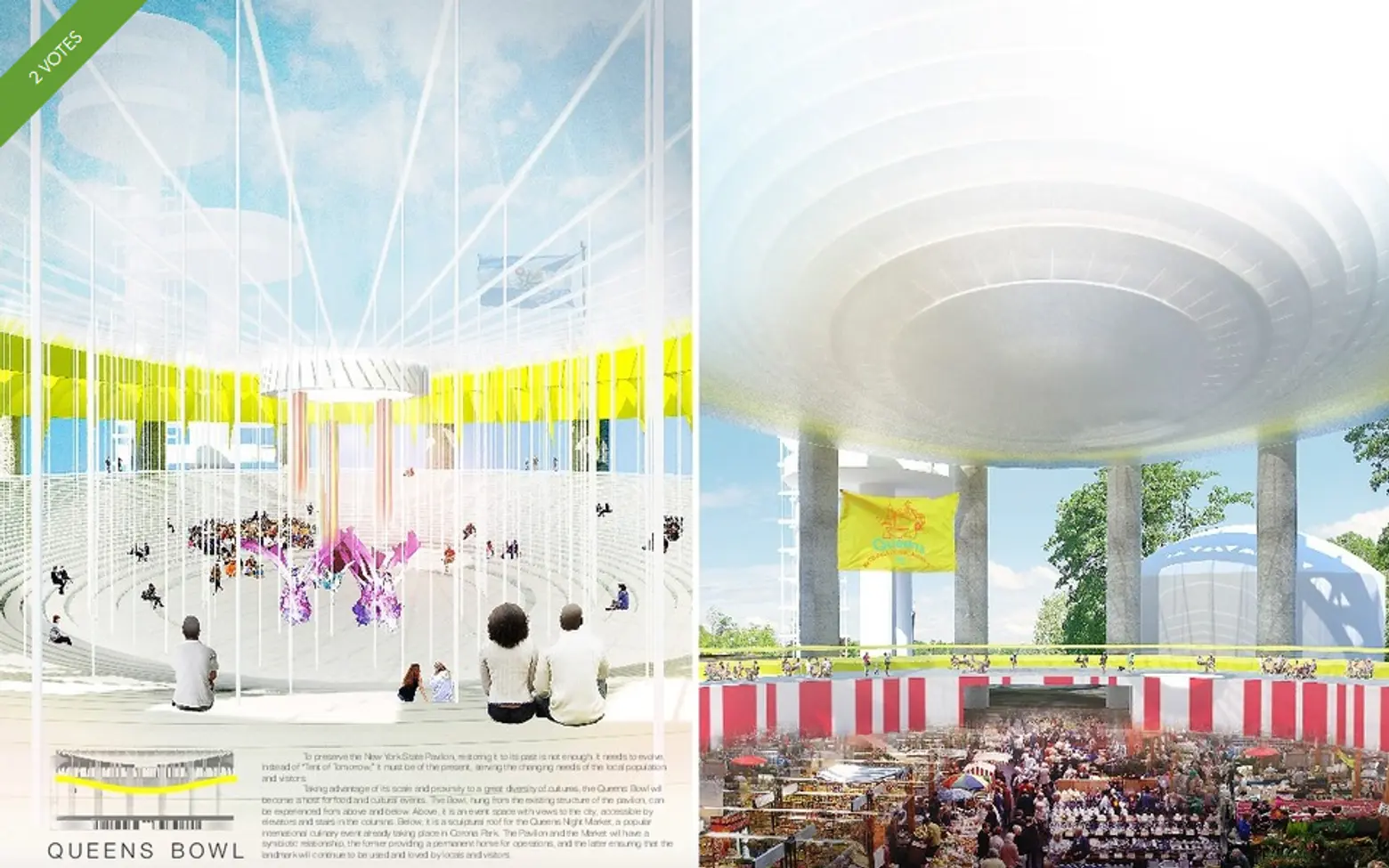
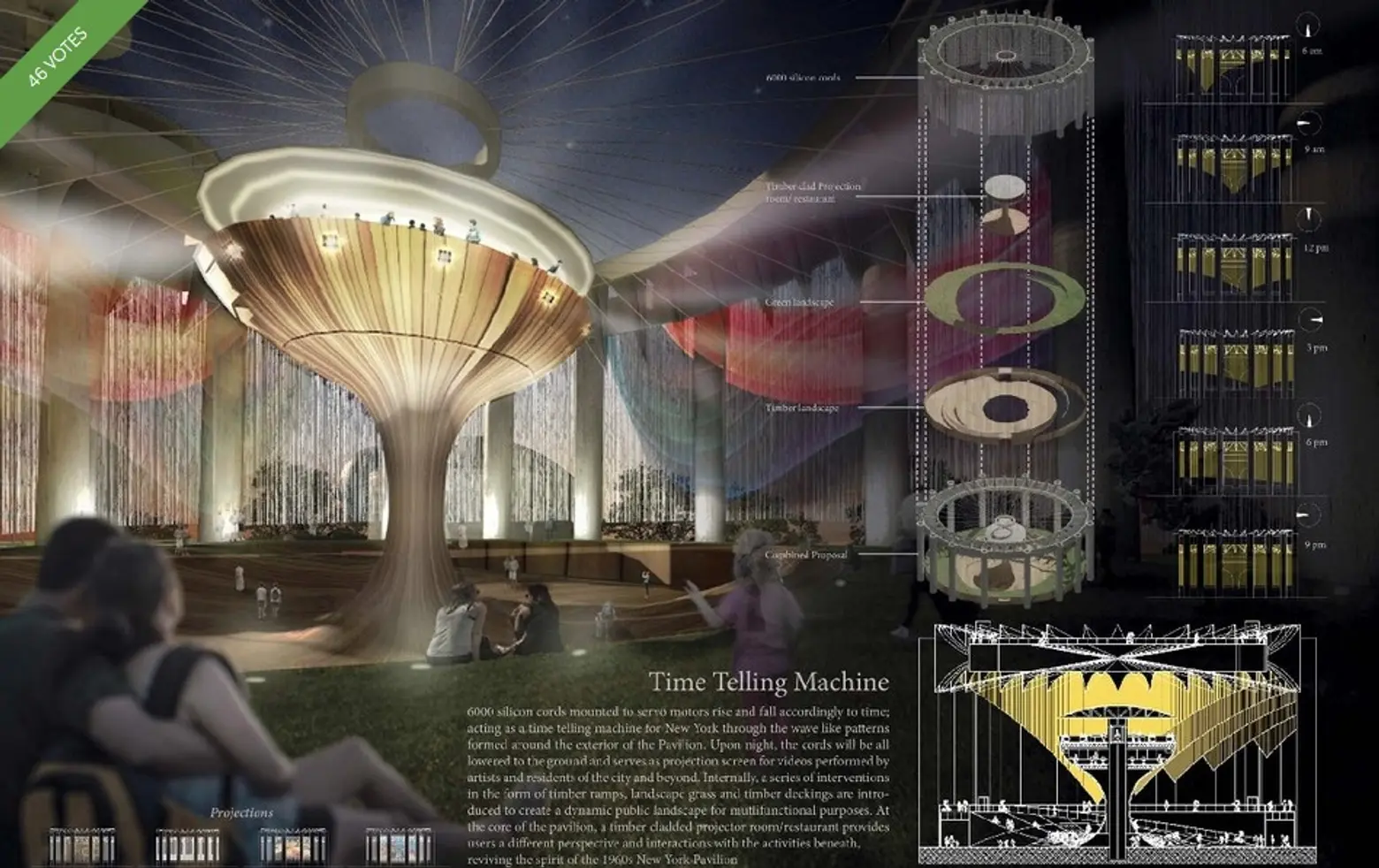
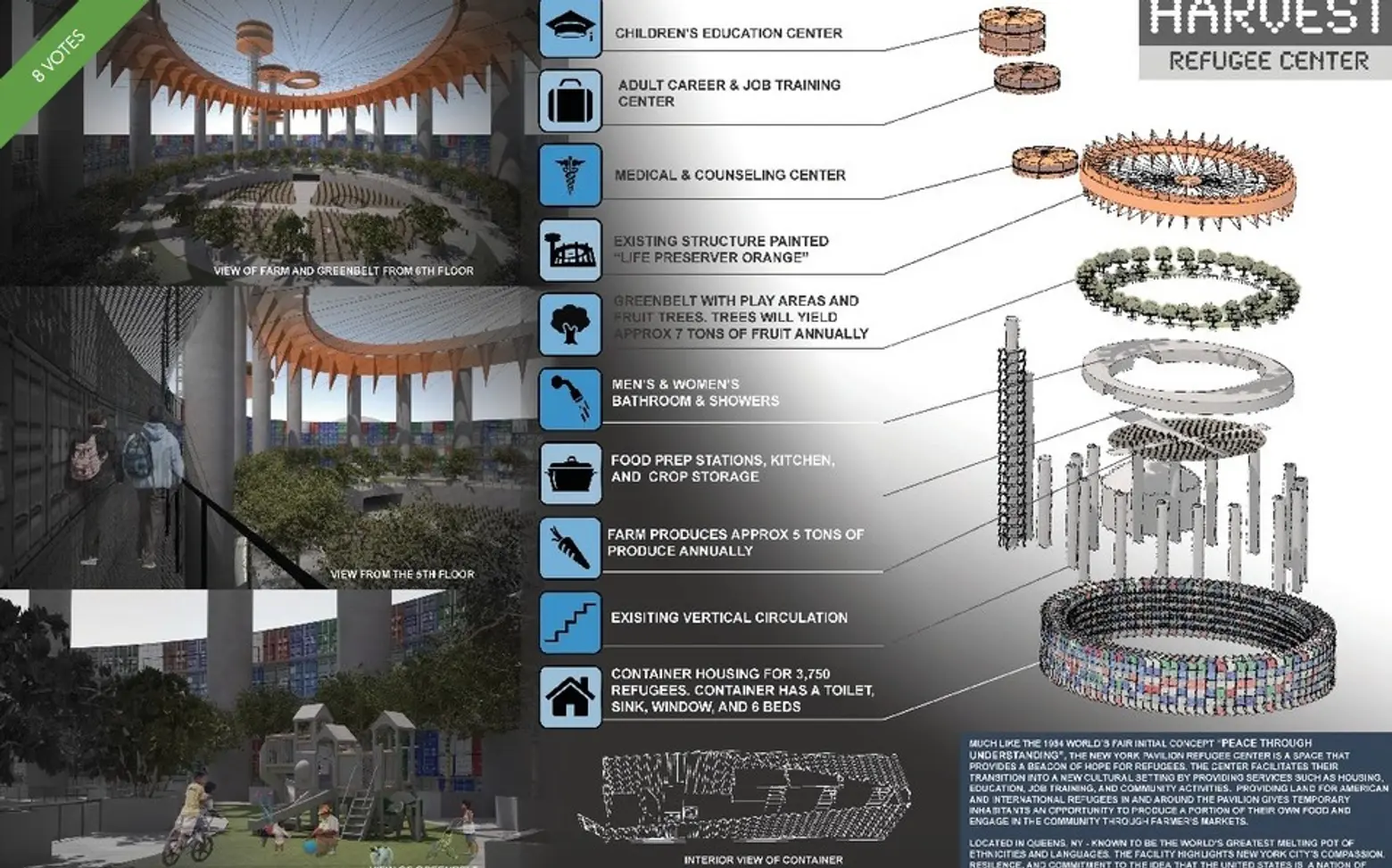
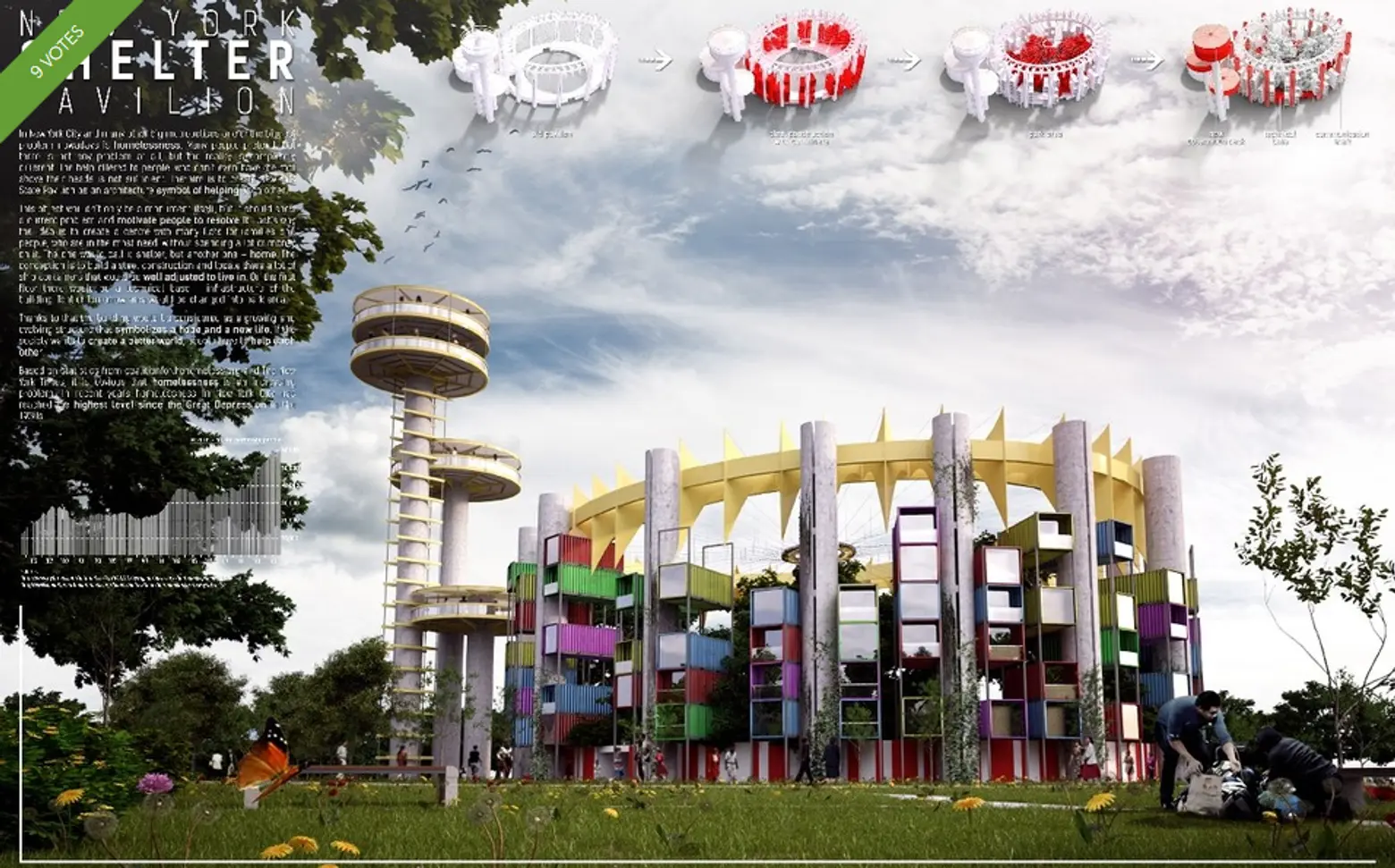
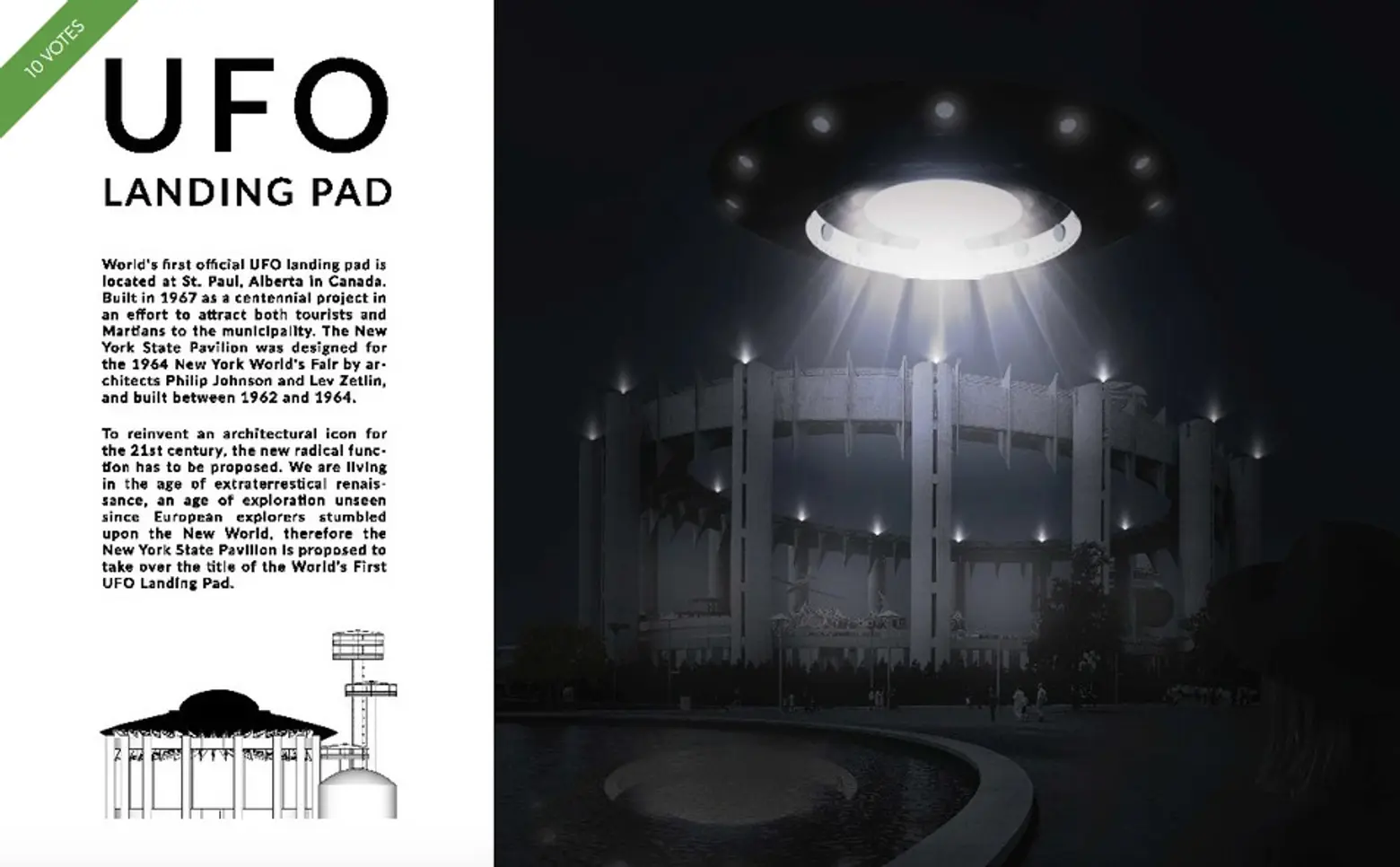
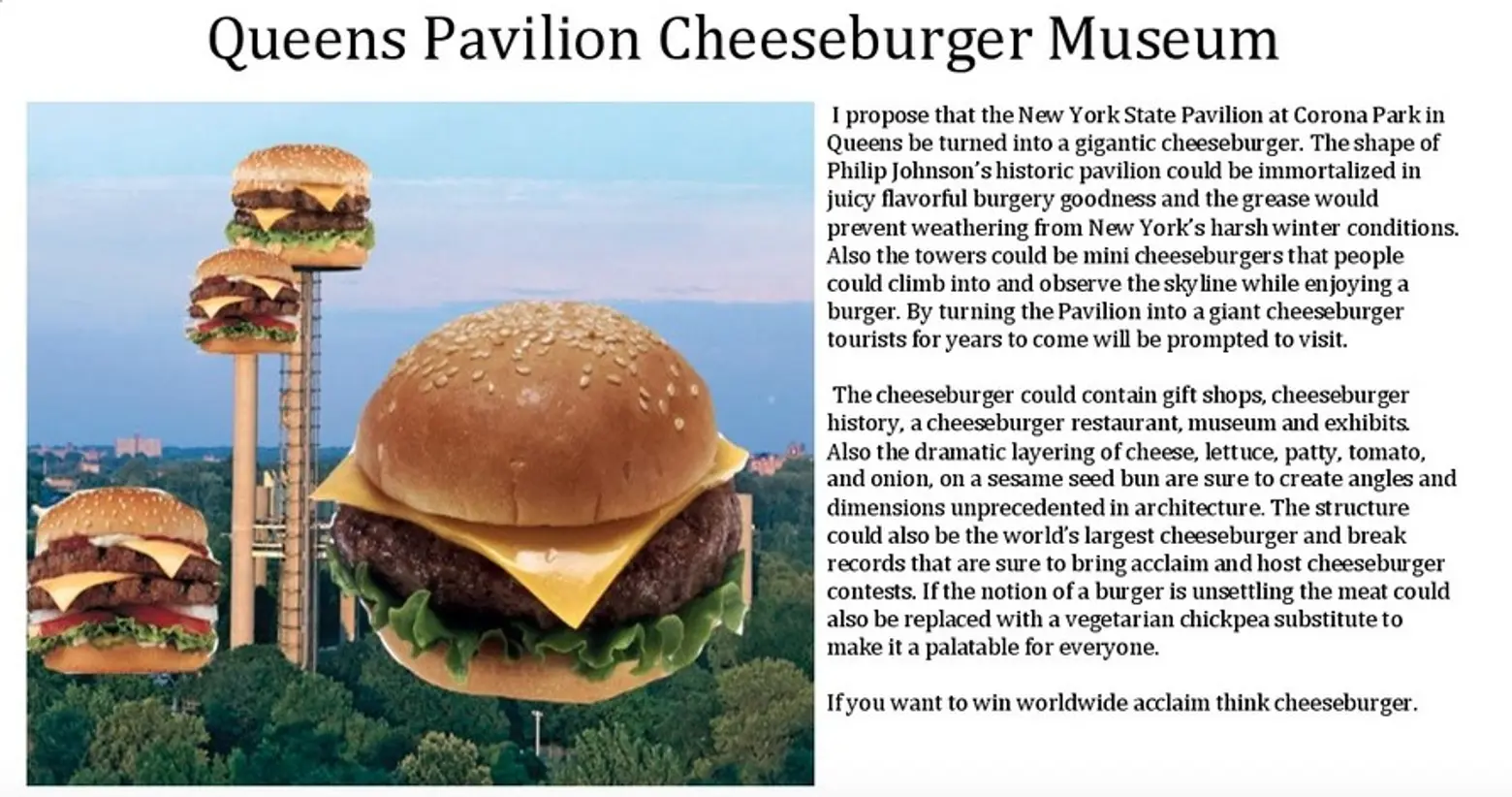
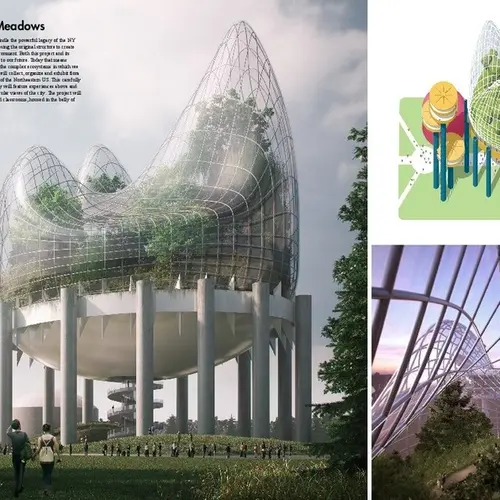
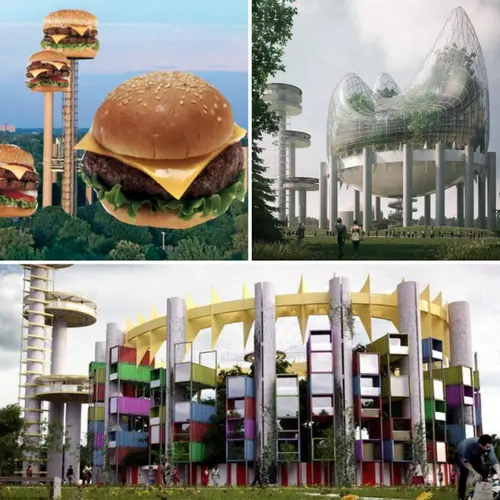
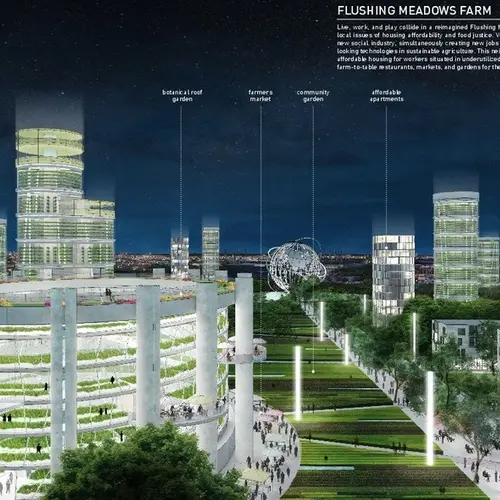
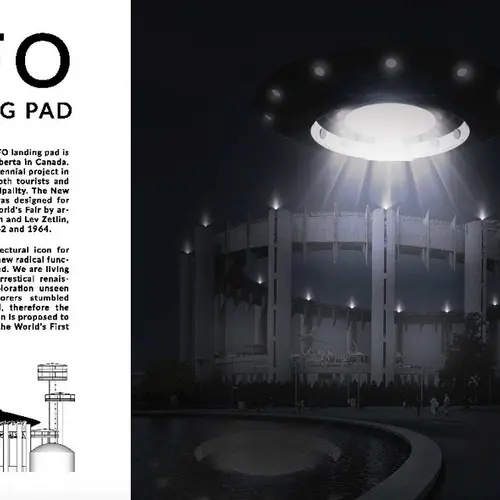
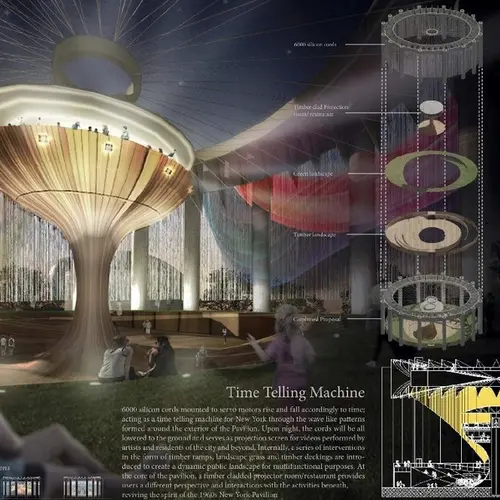
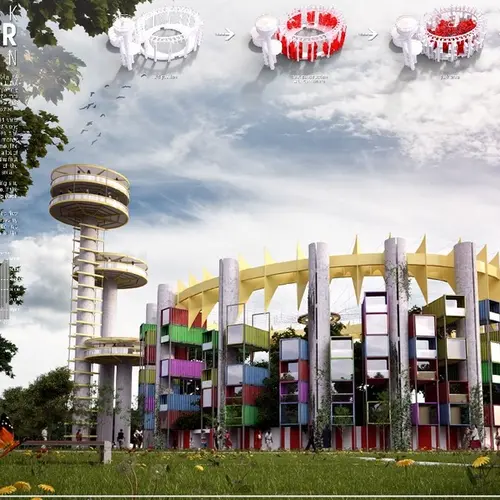
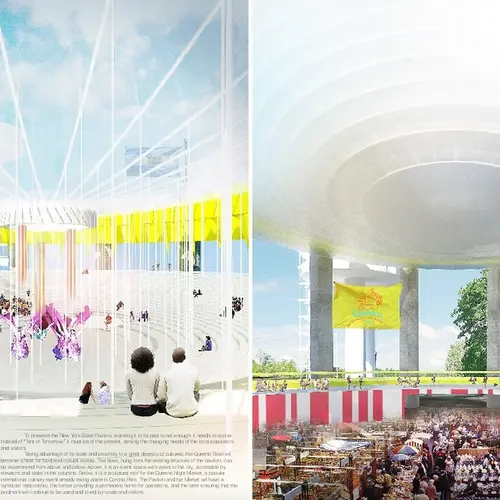
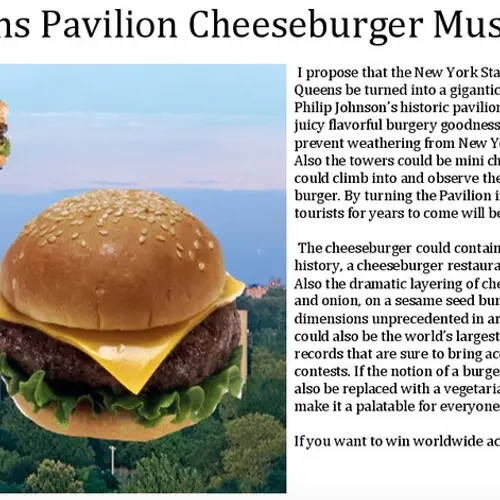
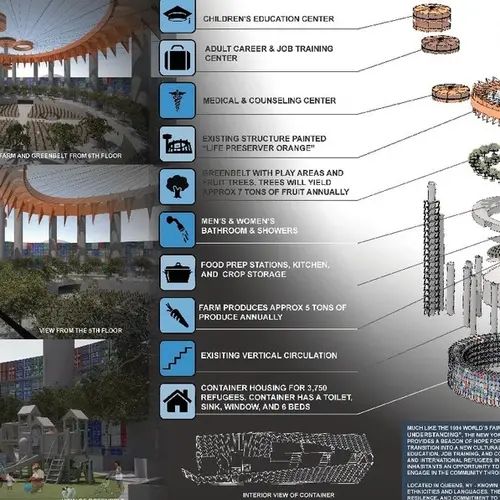
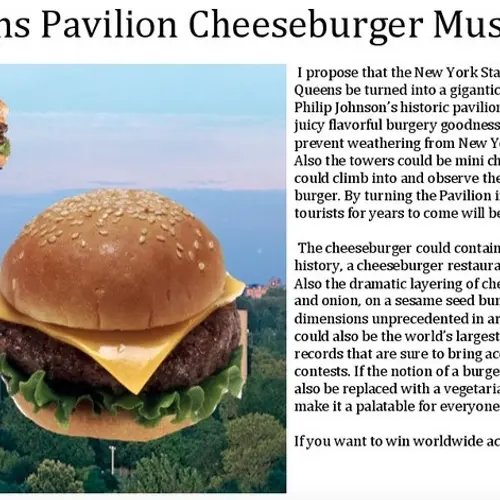











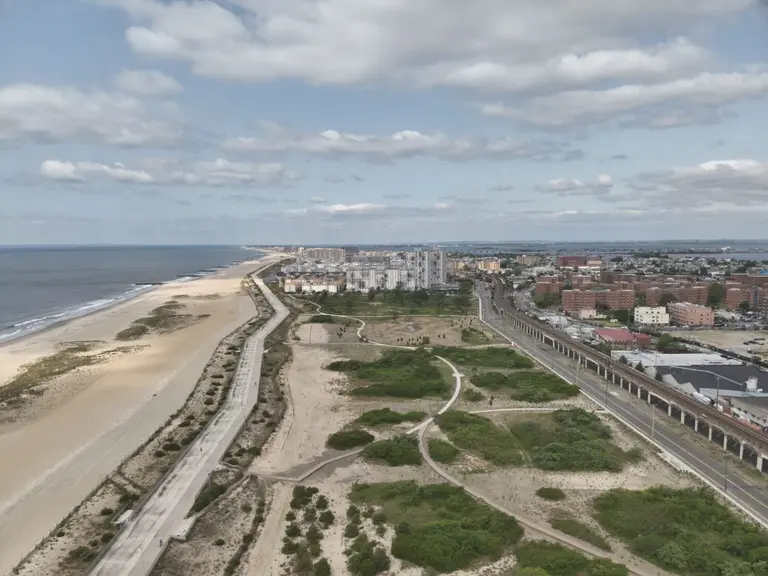

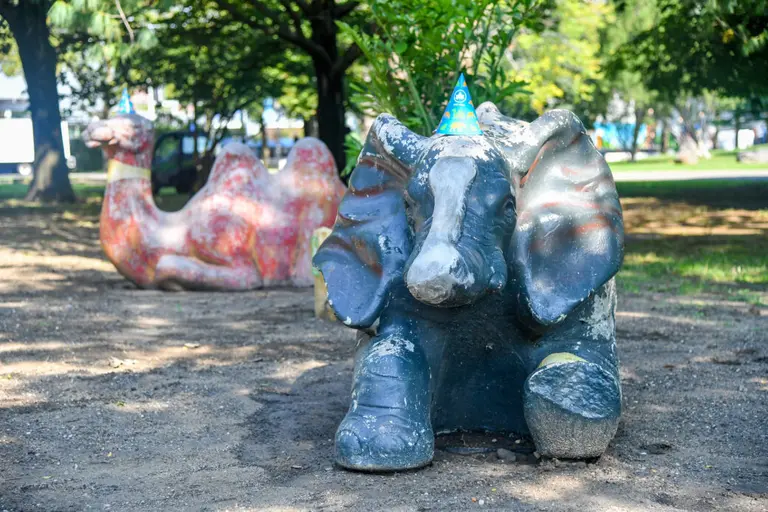
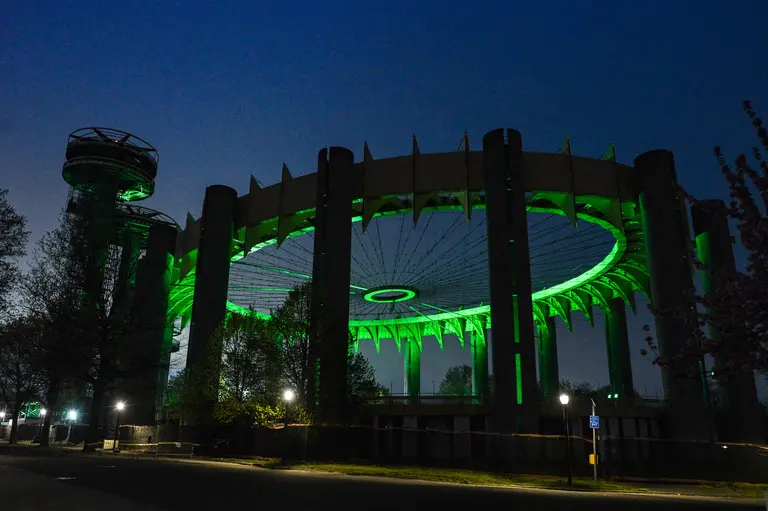
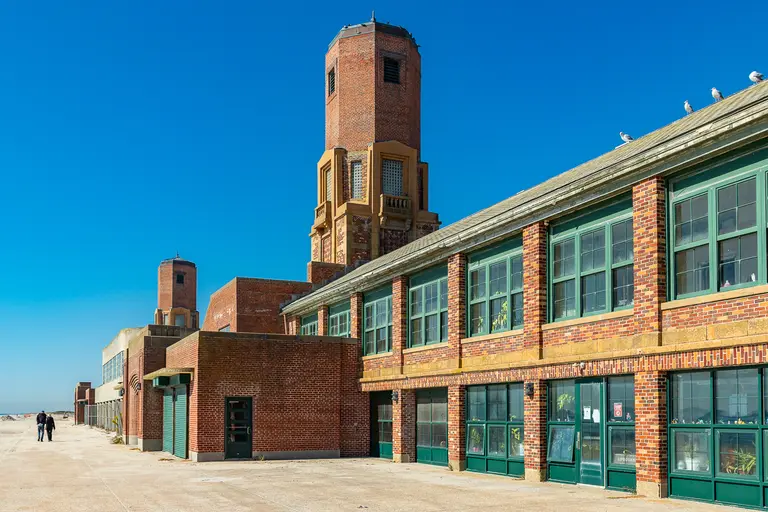












Dr. Dickson Despommier, a professor of environmental health sciences at Columbia University, has said of hydroponic farming: “This is a high speed bullet train.” (THE BIG IDEA, “Hydroponics: A farming revolution,” Fox, Dec. 7, 2015.)
Each of the three “Astro-View” observation towers could contain hydroponic growing installations. Walkways around the perimeter — overlooking the fantastic outside views — would lead past exhibits explaining the growing method. The installation, as a whole, would empower people to go home and start horizontal and vertical hydroponic growing systems of their own. Professor Despommier’s concept of skyscraper as “spaceship” is especially well-suited to the Astro-View Towers. The towers have been suggestive of spaceships in movies such as the “Wiz” and “Men in Black.”
A vertical hydroponic farm would be worthy of the “Tent of Tomorrow” — it would demonstrate to the world a method of feeding our cities into the next Century.
Revenues could be generated through the sale of produce to local restaurants or, better yet, at farmers markets held on the grounds. The sixteen 98-foot-high columns would be an impressive feature of the grandest vertical public hydroponics garden in the world.
Having the roof of the Tent of Tomorrow open would take advantage of existing rainfall and natural sunlight. Relying only on natural sunlight, however, would lead to the facility being used only for part of the year.
Alternatively, the open air structures could be enclosed by a greenhouse structure to extend the season.
Under either alternative, electricity could be powered by lightweight solar panels which would power the dark sky friendly downward-facing LED lights. If the Tent of Tomorrow were to be enclosed, instead of the colored canopy that existed at the time of the fair, the Tent of Tomorrow could be covered by ultralight solar panels.
https://contest.savingplaces.org/7x8yty1x